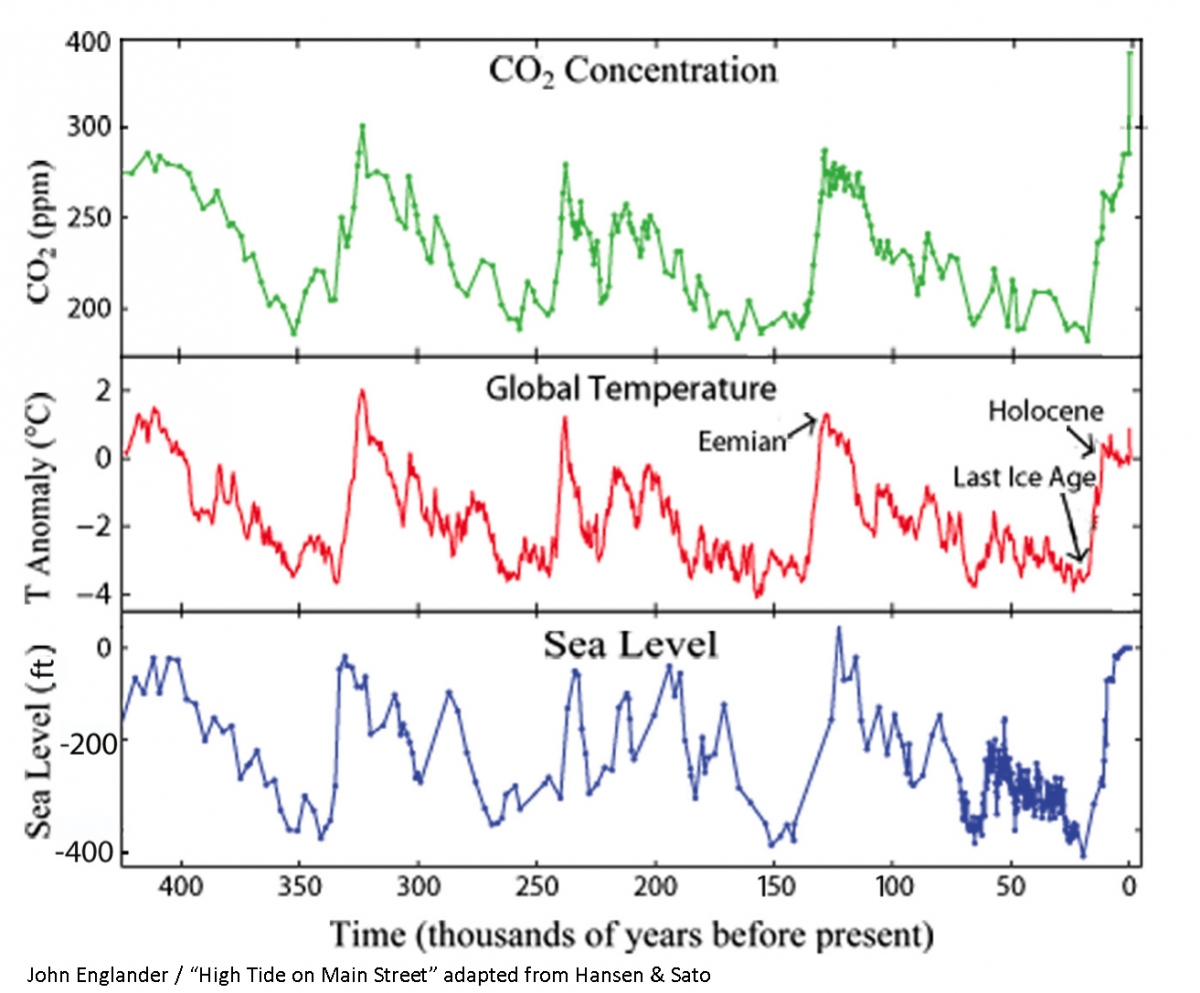CO2 breaks the 400 level. Significant?
In the last few days there were headlines that carbon dioxide levels (CO2) broke the four hundred level for the first time in millions of years. It is worth commenting on that milestone. The record of CO2 is known as the Keeling Curve named after Charles David Keeling who pioneered the long term study in the early 1950’s.
Carbon Dioxide has been rising along with the accelerated burning of fossil fuels. The concern is that its heat trapping characteristic is a matter of simple physics, having been demonstrated in 1826. Without any CO2 in our atmosphere, Earth would be sixty degrees F colder, with average temperatures well below freezing.
Our problem is the opposite. The higher level of carbon dioxide and slowly increasing temperature are a cause for great concern by the vast majority of scientists. For millions of years CO2 levels have ranged from roughly 180 to 280 parts per million (ppm). It is what our entire biological ecosystem takes as the natural range of variability.

It should be a cause for concern. Surveys show that most Americans grasp the problem and are in favor of establishing policies to lower the carbon dioxide level as a high priority. It will require the greatest technological effort in human history, surpassing the effort to build the atom bomb or put a man on the moon.
The concern is well illustrated by the correlation shown here of hundreds of thousands of years of CO2, global average temperature, and sea level. It takes decades and centuries for the ice sheets in the polar regions to adjust to new global temperature levels. This graph shows how the CO2 level has rocketed upwards, shown in Green, now 40% higher than the natural variation. Temperatures (red line) have started to climb, now about one and a half degrees F warmer than in millions of years. As would be expected, sea level (blue line) is slowly following, already about eight inches higher than in the last hundred thousand years. Based on the synchronous movement of these three lines, it is obvious that sea level will not stop rising until it is tens of feet higher, eventually moving the shoreline far inland. It will take centuries for that to fully manifest.
As I cite in my recent book, High Tide On Main Street: Rising Sea Level and the Coming Coastal Crisis the last time carbon dioxide was at the 400 level, global temperatures we at least five degrees F warmer than now and sea level was approximately 75 feet higher. The ice sheets do take time to melt accounting for the “lag time.”
It is true that we do not know exactly how quickly we can melt the great ice sheets and raise sea level. We are running “the experiment” now. We do know that the elevated ocean temperatures mean that the ice sheets will not begin to rebuild, reversing sea level rise for for at least a thousand years. Interestingly most of the public understands the gravity of the situation, the impacts on normal weather patterns, and on sea level rise and storm patterns.
For some reason the US Congress is resistant to change. Many think that is just another indication of their disconnect and governance problem. If you are concerned, it is a good idea to leave a message with your elected representatives. You might leave it on behalf of future generations who will be left to deal with a very different planet. It will be our legacy.
